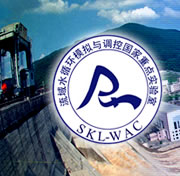《Hydrological process》杂志刊登“美国西南部半干旱城市集水区径流大小与溶液化学的时间分布和控制”
作者:Erika L. Gallo, Paul D. Brooks, Kathleen A. Lohse, Jean E. T. McLain
刊物:《Hydrological process》,2013年,27卷第7期,995-1010页
关键词: 城市;径流;半干旱的;水质;径流系数
摘要:在干旱和半干旱地区,城市扩张和供水短缺增加了城市径流转化为局部水资源的重要性。但是我们对半干旱城市集水区对降水的响应却知之甚少,因为在短暂的夏季季风季节,发生在半干旱地区的强降水常常导致大径流过程。为了估计城市径流的数量和质量是如何响应降雨强度和降雨历时的,收集了亚利桑那州图森市的4个短暂性水系在整个2007年和2008年夏季季风时期的河水位和径流资料。前期降雨能解释最不透水流域(占22%)20%到30%的流量和径流比,但是在更多的不透水地区,前期降雨与水文过程却没有统计上的关系。回归模型表明,流量和径流比受降雨量和不透水性及二者综合作用的控制(p < 0.01, r2 = 0.91 和 0.75)。相比之下,径流的水质不随不透水性和流域大小而变化。降雨量和降雨历时,自前期降雨和累计流量控制径流水文化学,导致五个特定的溶质响应模式:(一)大水文过程和季节性的溶质转移(溶质冲洗),(二)水文过程化学静态和季节性较强的溶质冲洗,(三)水文过程化学静态和季节性较弱的溶质冲洗,(四)一般的水文过程和季节性化学静态(五)后期季节性冲洗。研究结果表明,半干旱地区的水文响应在事件尺度上受降雨分区的控制,而湿润的幅度、频率和时序可以通过改变溶质的含量使暂时径流水质容易输送和控制。
Temporal patterns and controls on runoff magnitude and solution chemistry of urban catchments in the semiarid southwestern United States
Authors: Erika L. Gallo, Paul D. Brooks, Kathleen A. Lohse, Jean E. T. McLain
Journal:Hydrological Processes,Volume 27, Issue 7, pages 995–1010, 30 March 2013
Keywords: urban; runoff; semiarid; water quality; runoff ratio
Abstract:Urban expansion and the scarcity of water supplies in arid and semiarid regions have increased the importance of urban runoff to localized water resources. However, urban catchment responses to precipitation are poorly understood in semiarid regions where intense rainfall often results in large runoff events during the short summer monsoon season. To evaluate how urban runoff quantity and quality respond to rainfall magnitude and timing, we collected stream stage data and runoff samples throughout the 2007 and 2008 summer monsoons from four ephemeral drainages in Tucson, Arizona. Antecedent rainfall explained 20% to 30% of discharge (mm) and runoff ratio in the least impervious (22%) catchment but was not statistically related to hydrologic responses at more impervious sites. Regression models indicated that rainfall depth, imperviousness and their combined effect control discharge and runoff ratios (p < 0.01, r2 = 0.91 and 0.75, respectively). In contrast, runoff quality did not vary with imperviousness or catchment size. Rainfall depth and duration, time since antecedent rainfall and event and cumulative discharge controlled runoff hydrochemistry and resulted in five specific solute response patterns: (i) strong event and seasonal solute mobilization (solute flush), (ii) event chemostasis and strong seasonal flush, (iii) event chemostasis and weak seasonal flush, (iv) event and seasonal chemostasis and (v) late seasonal flush. Our results indicate that hydrologic responses of semiarid catchments are controlled by rainfall partitioning at the event scale, whereas wetting magnitude, frequency and timing alter solute stores readily available for transport and control temporal runoff quality.
原文链接:http://onlinelibrary.wiley.com/doi/10.1002/hyp.9199/abstract
翻译:张大茹;审核:何凡

